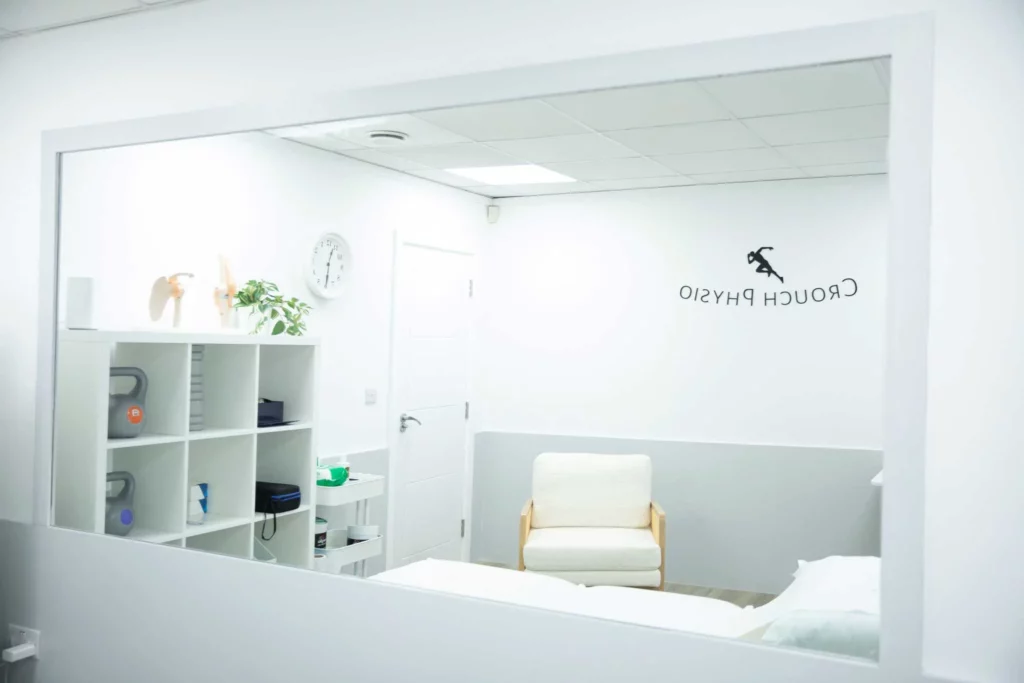In the realm of physiotherapy, practitioners are constantly seeking innovative methods to optimise rehabilitation outcomes. One such approach that has gained traction in recent years is blood flow restriction (BFR) exercises. Initially developed in Japan in the 1960s, BFR has evolved into a promising adjunct to traditional rehabilitation protocols.
Blood flow restriction (BFR) exercises, also known as occlusion training, involve the application of a specialised tourniquet or cuff to partially restrict blood flow to the muscles during exercise. The concept behind BFR exercises is to create a state of metabolic stress within the muscles similar to that achieved with heavy lifting but using significantly lighter loads. This technique typically involves wrapping a narrow inflatable cuff or band around the limb (usually the upper arm or thigh) and inflating it to a specific pressure to partially occlude arterial inflow while allowing venous return. For resistance training exercises, such as squats, leg presses, or bicep curls, a typical BFR session may involve performing multiple sets of the exercise with a moderate load while the cuffs remain inflated. Each set may last around 3 to 5 minutes, with short rest periods in between. It’s essential to monitor the individual’s response during the session and adjust the pressure or exercise intensity as needed to ensure safety and effectiveness.
This blog aims to delve into the benefits of BFR exercises within physiotherapy treatment, supported by the latest academic evidence. So what are the benefits?
1. Enhanced Muscle Hypertrophy: Contrary to traditional belief, BFR exercises have been shown to induce muscle hypertrophy even within older populations. Research has shown that BFR can be beneficial for muscle hypertrophy in people aged 50 or older (1). This shows that BFR is not just beneficial for higher end athletes but also has place in helping the older population.
2. Improved Strength Gains: BFR training has been shown to elicit comparable strength gains to high-load resistance training, with significantly lighter loads. Studies show that BFR can improve strength of people with knee osteoarthritis (2). This is particularly beneficial for patients with compromised strength due to injury, ageing or muscular skeletal conditions, allowing for safer and more tolerable resistance exercise.
3. Accelerated Rehabilitation: Incorporating BFR exercises into rehabilitation programmes has shown promise in expediting the recovery process. Studies demonstrated that BFR training, when combined with conventional therapy, led to quicker return to function and reduced rehabilitation duration in patients recovering from anterior cruciate ligament (ACL) reconstruction whilst also limiting muscle mass loss in early-stage ACL rehab post-surgery (3). This suggests that BFR may facilitate early-stage strength gains and functional improvements, promoting faster rehabilitation progress.
4. Cardiovascular Benefits: Despite the restriction of blood flow, BFR exercises have been found to elicit cardiovascular adaptations similar to those observed with traditional aerobic exercise. Research has shown that oncological patients experienced a vast range of benefits from the use of BFR including positive cardiovascular adaptations (4).
5. Pain Management: BFR exercises have shown potential in attenuating pain and discomfort associated with rehabilitation (5). BFR training has been seen as effective in reducing pain levels in patients with various conditions. The analgesic effects of BFR may allow for better tolerance of exercise and improved adherence to rehabilitation programmes.
In conclusion, the incorporation of blood flow restriction exercises into physiotherapy treatment holds several promising benefits supported by current academic evidence. From enhancing muscle hypertrophy and strength gains to expediting rehabilitation and improving cardiovascular health, BFR offers a versatile and effective adjunct to traditional rehabilitation strategies. However, further research is warranted to elucidate the optimal protocols and long-term effects of BFR exercises across different patient populations.
Blood Flow Restriction (BFR) is something that we do offer here at Crouch Physio for all populations. Do not hesitate to get in touch to discuss a plan of how to incorporate BFR into your rehabilitation, treatment or recovery plans. Our Barnet, Cockfosters & Enfield Physio’s have tons of experience in implementing the use BFR in rehabilitation. Have confidence that our specialist Physiotherapists will closely assess, diagnose & treat you in the correct & evidence-based way for all injuries. You can book an appointment here.
Blog By: Emre Oz (Musculoskeletal Physiotherapist at Crouch Physio).
References:
1. Baker, B.S., Stannard, M.S., Duren, D.L., Cook, J.L. and Stannard, J.P., 2020. Does blood flow restriction therapy in patients older than age 50 result in muscle hypertrophy, increased strength, or greater physical function? A systematic review. Clinical Orthopaedics and Related Research®, 478(3), pp.593-606.
2. Pitsillides, A., Stasinopoulos, D. and Mamais, I., 2021. Blood flow restriction training in patients with knee osteoarthritis: Systematic review of randomized controlled trials. Journal of bodywork and movement therapies, 27, pp.477-486.
3. Jack, R.A., Lambert, B.S., Hedt, C.A., Delgado, D., Goble, H. and McCulloch, P.C., 2023. Blood flow restriction therapy preserves lower extremity bone and muscle mass after ACL reconstruction. Sports health, 15(3), pp.361-371.
4. Vinolo-Gil, M.J., García-Campanario, I., Estebanez-Pérez, M.J., Pastora-Bernal, J.M., RodríguezHuguet, M. and Martín-Vega, F.J., 2023, July. Blood Flow Restriction in Oncological Patients: Advantages and Safety Considerations. In Healthcare (Vol. 11, No. 14, p. 2062). MDPI.
5. Ladlow, P., Coppack, R.J., Dharm-Datta, S., Conway, D., Sellon, E., Patterson, S.D. and Bennett, A.N., 2018. Low-load resistance training with blood flow restriction improves clinical outcomes in musculoskeletal rehabilitation: a single-blind randomized controlled trial. Frontiers in physiology, 9, p.1269.




